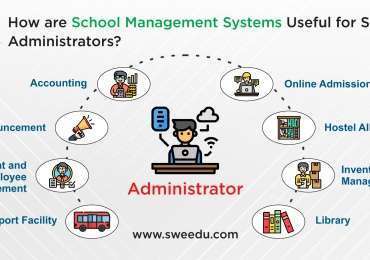The traditional education landscape has undergone significant transformations in recent years. Physical classroom attendance is no longer the sole option for learning.
Virtual training classes are rapidly gaining popularity, offering a more cost-effective, scalable, and schedule-friendly learning environment that fosters optimal knowledge absorption.
Virtual classrooms provide an economically feasible solution by reducing training expenses across various categories, including travel costs, accommodation fees, and more. Training materials are delivered online through digital media, enabling virtual classrooms to offer a continuous learning environment that enhances learning effectiveness.
Advantages of Virtual Classes
Parents, students, and teachers are increasingly embracing virtual classrooms over traditional classrooms due to several key advantages of online learning:
-
Cost-Effectiveness and Scalability
Virtual classrooms eliminate the substantial financial burden associated with traditional education, as they do not require extensive infrastructure or incur travel expenses. This makes virtual learning accessible to a wider range of students since it goes beyond the socio-economic barriers in the society.
Moreover, online classrooms unlike traditional classrooms can accommodate a higher number of learners, making them an ideal solution for expanding educational opportunities to underserved communities, marginalized areas, and remote villages even.
-
Continuous Learning and Personalized Instruction
Virtual learning platforms provide a self-paced environment where students can progress at their own speed, fostering deeper engagement and enhanced knowledge retention. By accommodating a wide range of learning preferences and styles, this individualized teaching approach makes sure that every student has the best possible learning experience.
On top of that, students can study more in-depth material and specialize at their own pace in virtual classrooms since they have access to a larger library of instructional materials.
-
Immediate Feedback and Enhanced Engagement
Virtual classrooms offer a unique advantage in the form of instant feedback on assessments. This real-time evaluation enables students to identify areas for improvement and gain a clear understanding of their strengths and weaknesses. This immediate feedback loop promotes active learning and encourages students to take ownership of their learning journey.
Furthermore, virtual classrooms foster active engagement through interactive discussions, content sharing, and social learning. This collaborative approach enhances understanding, cultivates a sense of shared purpose, and promotes a more dynamic learning environment.
-
Multimedia-Rich Learning Experience and Flexibility
Virtual classrooms transform learning into an immersive and engaging experience by incorporating multimedia elements such as engaging videos, interactive simulations, and gamified learning components. This method guarantees that students can interact with the content and obtain information in the way that best suits their learning style.
Students can learn from anywhere in the world, no matter where they are or what their personal obligations are, thanks to virtual learning. This flexibility expands educational chances for everyone by making education accessible to working professionals, people with impairments, and people living in remote places.
-
Environmentally Friendly and Sustainable
Our carbon footprint is being reduced by virtual classrooms, which is protecting our world. This indicates that they are contributing to the reduction of greenhouse gas emissions into the atmosphere, which is beneficial to the environment.
In addition to saving resources, virtual classrooms consume less paper and other materials than traditional classes. They become a more sustainable option for schooling as a result.
-
Bridging the Gap and Shaping the Future of Learning
By bridging the gap between traditional learning and the needs of the 21st century, virtual classrooms have changed education. For both educators and students, their affordability, scalability, flexibility, and customized approach make them an indispensable resource.
We can democratize education, give people more control, and create a more inclusive and promising future for learning if we embrace virtual learning.
Education ERP: A Driving Force in Virtual Learning and Classrooms
The rise of virtual learning has transformed the educational landscape, demanding innovative solutions to streamline administrative processes and enhance the virtual learning experience.
Education ERP systems like SWEEDU have emerged as a powerful tool for managing and optimizing virtual learning environments, providing a comprehensive suite of features that support both educators and learners.
Here are some of the key benefits of Education ERP systems for virtual learning:
-
-
- Streamlined administrative processes: Education ERP systems automate many of the manual tasks associated with managing virtual courses, such as enrollment, grading, and feedback. This frees up educators’ time so they can focus on teaching and student support.
- Enhanced virtual classroom management: Education management systems provide tools for creating and managing online courses, distributing course materials, and facilitating online discussions. They also enable educators to monitor student attendance, track engagement, and provide real-time feedback.
- Personalized learning and adaptive teaching: Education ERP software incorporates data analytics to provide insights into individual student learning. This information enables educators to personalize instruction, tailor content delivery, and provide targeted support to each student’s unique needs.
- Collaboration and communication hub: Education management software serve as a central hub for communication and collaboration among educators, students, and parents. They include features for messaging, file sharing, and student-teacher feedback.
- Integration with Learning Management Systems (LMS): Education ERP systems integrate with Learning Management Systems (LMS). This allows teachers access and manage course materials, student assessments, and student data through a single platform.
- Real-time reporting and analytics: ERP systems provide real-time reporting and analytics on different aspects such as student performance, attendance, and more enabling teachers to assess their teaching methods, and make informed decisions.
-
EndNote
Online classrooms have emerged as a transformative change, revolutionizing the way we learn and teach. Their ability to provide cost-effective, scalable, and personalized learning experiences have made them indispensable.
By embracing virtual learning and leveraging the power of education technology tools like ERP systems, we can democratize education, empower individuals, and create an inclusive future of learning for all.
Embark on the journey of virtual learning with SWEEDU Education ERP, the comprehensive solution that empowers your institution to deliver exceptional online education.
Start a FREE Trial Demo to experience the transformative power of SWEEDU Education ERP.




